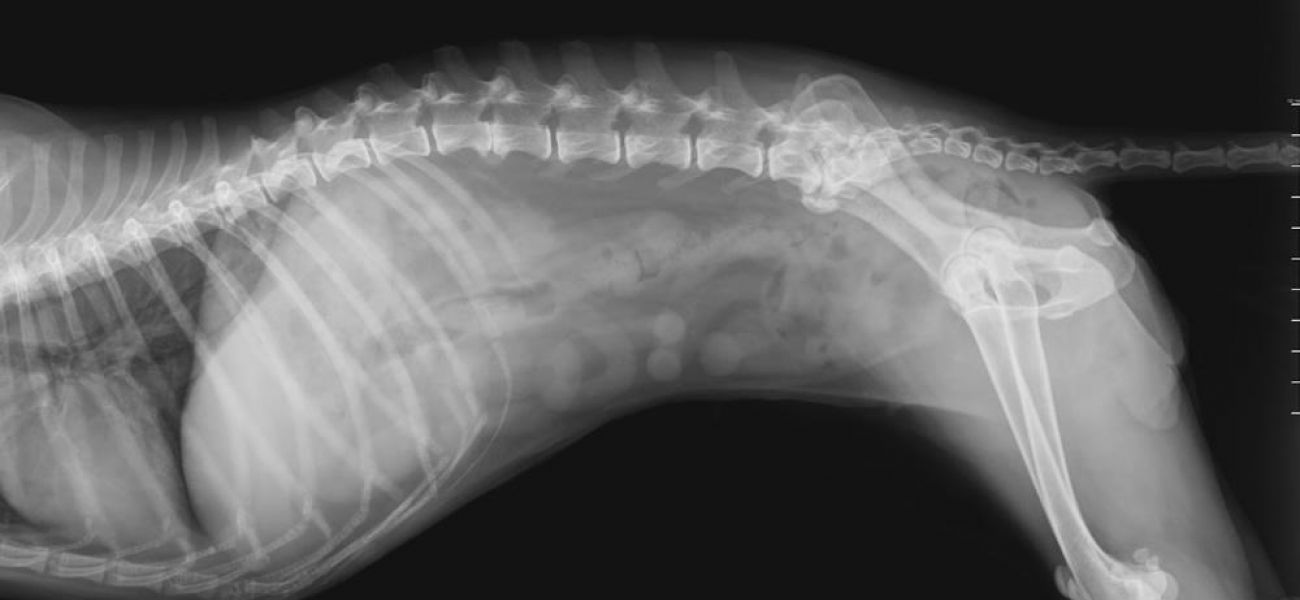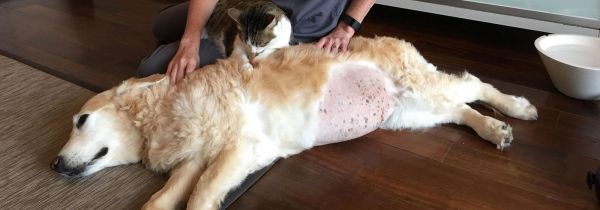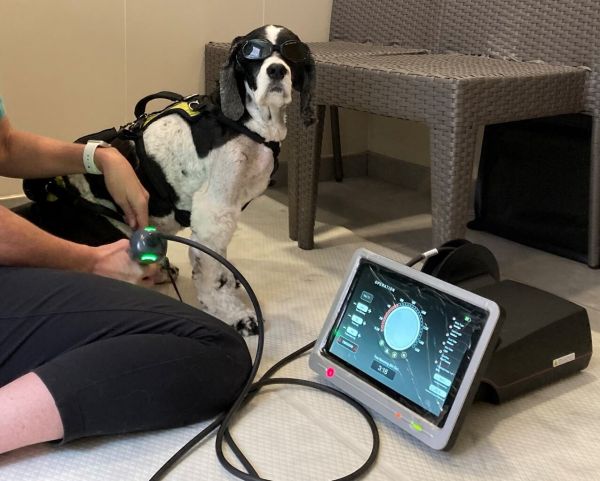
Supporting the Brain and Spine Injuries

When pets suffer from neurological problems the symptoms are significant and can be very worrying!
Neurological injuries are complex and require intensive veterinary assessment and diagnosis, including physical examination, blood work and often imaging like MRI or CT scans. The likelihood of a full recovery depends on the cause of symptoms, the duration of the injury, and many pet factors. The recovery process takes time and can be slow. During this time, your pet often needs intensive support.
Rehabilitation is aimed at helping the nerves regenerate by utilising their ability to reorganise and adapt, known as neuroplasticity. We select techniques and equipment that encourage and target functional retraining of motor learning, such as specific manual therapies and massage, electrical stimulation, laser therapy, electromagnetic field therapy, and functional strength and conditioning home exercise programmes.
Rehabilitation plays an integral role in the care of an Intervertebral disc disease (IVDD) patient, whether managed with medicine or surgery. In the post-op patient, care needs to focus on pain control, nursing care and rehabilitation of the nervous system to encourage the return of function.
All our therapies are non-painful and non-invasive. Therapies vary depending on your pet, their needs and condition.

Many specialised ‘hands-on’ techniques are used by our veterinary therapists to assess and treat joints, soft tissue abnormalities & muscles tightness. Therapeutic massage is also used to treat muscle tension and tightness which occur secondary to neurological problems.
More about Manual Therapy
At higher frequencies, NMES is used to stimulate motor nerve fibres of weak muscles which results in muscle contraction to help in the strengthening of the muscle. NMES is most often used in patients that are too weak to move certain muscle groups – muscles that have atrophy or loss due to disuse after injury or from neurological disease.
More about NMES
Therapeutic laser uses invisible infrared light energy (photons) to penetrate deep into tissues and enhance tissue healing. Laser therapy can be used to help rehabilitate patients with pain, tissue swelling, inflammation, muscular tightness, neurological conditions, and also to deliver laser-puncture (acupuncture via laser).
More about Laser Therapy
PEMF is used to generate low level electrical fields in the body, which target the bodies anti-inflammatory process to aid in tissue repair and pain relief. In patients with nervous system issues, PEMF helps to support neuroplasticity or nerve healing.
More about PEMF
Digital infrared thermal imaging with Digatherm helps us to visualise the pain and inflammation with a non-invasive physiological body scan that evaluates your pet’s circulation, neurological and musculoskeletal function. Thermal imaging is not a diagnosis, but a step to help us to target our treatments and identify areas of poor blood flow in neurological cases such as intervertebral disc disease.
More about Digatherm
For neurological conditions, healing occurs via neuroplasticity. Exercise needs to focus on both sensation (carrying messages to the brain) and motor or muscle (carrying messages to the muscle) recovery. Many various neurological techniques and exercises are selected to support recovery, depending on the type of injury, tissues involved, severity and ability of the pet. Both proprioception (foot placement) and balance exercises, along with strengthening, are key in neurological injuries. Various training equipment is utilised to match your pet’s needs and ability.
More About Therapeutic ExerciseOur process for neurological disorders such as spinal problems
Initially we need to collect as much information as possible about your pet and your concerns; we will send you a detailed online questionnaire to complete. We will also reach out to your family veterinarian and /or specialist for your pet’s full medical history.
At our physiotherapy initial consultation, we assess the gait and movement of your pet, review the medical history and perform a thorough physical assessment to determine which parts of their neurological and musculoskeletal systems are affected.
Working together with you, we then devise a physiotherapy and rehabilitation treatment plan which meets the needs and goals of your individual pet. The treatment plan will generally include a variety of therapies and home care for you to continue at home, alongside our treatments.
Regular physiotherapy re-assessments are made throughout the treatment period to ensure your pet is progressing well with their rehabilitation and to update any home exercises prescribed. The frequency varies depending on your pet’s needs.
"Always remember how grateful we’re for all you’ve done."
"One of the best things to happen on our journey in seeking the best recovery options for our beloved 9 year old Pomeranian Dau Dau was being introduced to Dr. Jane."
HK$ 2880
HK$ 2580
HK$ 1140
HK$ 350




